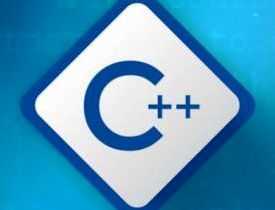Description
Course Name: Certificate in C ++
Course Id: CIC/Q1001.
Education Qualification: 12th Pass.
Duration: 90 Hrs.
How You will Get Diploma Certificate:
Step 1- Select your Course for Certification.
Step 2- Click on Enroll Now.
Step 3- Proceed to Enroll Now.
Step 4- Fill Your Billing Details and Proceed to Pay.
Step 5- You Will be Redirected to Payment Gateway, Pay Course and Exam Fee by Following Options.
Card(Debit/Credit), Wallet, Paytm, Net banking, UPI and Google pay.
Step 6- After Payment You will receive Study Material on your email id.
Step 7- After Completion of Course Study give Online Examination.
Step 8- After Online Examination you will get Diploma Certificate soft copy(Scan Copy) and Hard Copy(Original With Seal and Sign).
Step 9- After Certification you will receive Prospect Job Opportunities as per your Interest Area.
Online Examination Detail:
Duration- 60 minutes.
No. of Questions- 30. (Multiple Choice Questions).
Maximum Marks- 100, Passing Marks- 40%.
There is no negative marking in this module.
Benefits of Certification:
- Government Authorized Assessment Agency Certification.
- Certificate Valid for Lifetime.
- Lifetime Verification of Certificate.
- Free Job Assistance as per your Interest Area.
Syllabus
Certificate in C ++
Introduction to C++ Programming
Control Structures
Constructors and Destructors
Classes and Object
Arrays
C++ Language
Introduction to C++ Programming
History, Structure of a C program, C Conventions, Character Set, Identifiers, Keywords, Simple Data types, Modifiers, Variables, Constants, Operators (Arithmetic operator, relational operator, logical operator, ternary operator, unary operator, shorthand operator, bit-wise operator and arithmetic operator) Operator precedence. Input and Output operation: Single character input and output, formatted input and output, Buffered input.
Control Structures
Introduction, Conditional statement, if statement, if-else statement, nested if statement, else if statement and switch statement. Go to statement, looping statement, while statement, do while statement, for statement, break and continue, nested for statement, Arrays: Introduction (One and two dimensional), Declaration of arrays, Initialization of arrays, processing with arrays. String manipulation, declaration of string arrays, string operations.
Constructors and Destructors
Introduction – Functions of a constructor – types of constructor – Destructor – Features of a destructor – rules for constructor definition and usage – rules for destructor definition and usage – Difference between constructor and destructor – similarities between constructor and destructor – Inheritance – Definition – Advantages – Types of inheritance – Abstract class – derived class and base class – visibility mode.
Classes and Object
Difference between structure and class – specifying a class – points to be observed while defining a class – Data abstraction – creating objects – accessing class members – defining member functions – inside the class and outside the class – features of member functions – static data members – array of objects – Polymorphism – function overloading – how are functions invoked in function overloading – integral data promotion – rules for function overloading – operator overloading – operators that cannot be overloaded – process of operator overloading – rules for operator overloading.
Arrays
Introduction – types of arrays – rules for array subscripts – single dimension array – declaration – memory allocation – Calculating the memory requirement of single dimension array – String array – Initializing character array – double dimension array – memory representation of 2D array – row major order – column major order – initialization of 2D array.
C++ Language
Basics like compilation process, high-level programming language, variables, scalar data types, basic I/O operations, and streams, Control statements, logic and float operators, Functions: declaring & invoking functions, parameter passing, default parameters, inline functions, overloaded functions, Data access and Exception handling: strings, objects, methods, properties, namespace, exceptions, Basic OOPS concepts: class, objects, constructors, components, friend classes, overloading.

